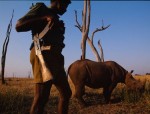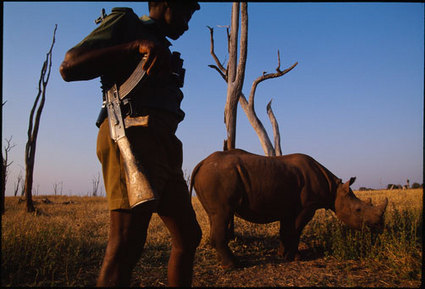 Five years ago, if you heard the words “human-wildlife conflict” (or HWC) the first thing that probably came to mind was the challenges agriculturalists in range countries face coexisting with native fauna. Maybe you thought about the struggle between Namibian goat herders and cheetahs or East African farmers protecting their crops from raiding elephants. In short, humans had what animals wanted. No doubt those types of incidences still exist, but the overall dynamic of human-wildlife conflicts have changed, and therefore need redefined.
Five years ago, if you heard the words “human-wildlife conflict” (or HWC) the first thing that probably came to mind was the challenges agriculturalists in range countries face coexisting with native fauna. Maybe you thought about the struggle between Namibian goat herders and cheetahs or East African farmers protecting their crops from raiding elephants. In short, humans had what animals wanted. No doubt those types of incidences still exist, but the overall dynamic of human-wildlife conflicts have changed, and therefore need redefined.
Perhaps the first thing we should change is our way of thinking; how we view conflict between man and beast. HWC is multifaceted. We still have the basic underlying trials and tribulations between humans living in close proximity to wildlife, but animal presence is no longer viewed as the sole instigator. Wildlife now possess commodities that to some are more precious than gold. Whether it is minerals found within their habitat or the ivory on their face, the increase in poaching makes it all too clear that some humans will stop at nothing to take what they want.
is multifaceted. We still have the basic underlying trials and tribulations between humans living in close proximity to wildlife, but animal presence is no longer viewed as the sole instigator. Wildlife now possess commodities that to some are more precious than gold. Whether it is minerals found within their habitat or the ivory on their face, the increase in poaching makes it all too clear that some humans will stop at nothing to take what they want.
 Poaching of wildlife has once again reached critical levels threatening species survival. To date, in South Africa alone, there have been 500 rhino illegally slaughtered for their horns. Likewise, researchers in the field estimate that over 30,000 African and Asian elephants have lost their lives in 2012 to fuel the ivory trade. The biggest threat to tiger conservation continues to be poaching with over 78% of Sumatran tiger deaths attributed to this heinous act. Daily news reports from around the globe exposing the confiscation of live and dead animals or their parts further shows that things are getting worse.
Poaching of wildlife has once again reached critical levels threatening species survival. To date, in South Africa alone, there have been 500 rhino illegally slaughtered for their horns. Likewise, researchers in the field estimate that over 30,000 African and Asian elephants have lost their lives in 2012 to fuel the ivory trade. The biggest threat to tiger conservation continues to be poaching with over 78% of Sumatran tiger deaths attributed to this heinous act. Daily news reports from around the globe exposing the confiscation of live and dead animals or their parts further shows that things are getting worse.
Rhino horn used to be sought after for the preconceived notion that it had almost supernatural medicinal properties. As the price of horn skyrocketed the individuals that used horn as part of an Ancient Chinese Medicine regimen could no longer afford it. So then why does the high demand continue? It continues because Rhino horn smugglers have found a niche in a new market, one of excess and status. Much like the successful young American male shows off his wealth with a new sport car, his Asian counterpart buys an intact Rhino horn to set on a shelf. In either case, it is all about status symbols and the mentality that someone can literally waste money on a frivolous item just because they can.
On the flip side of the coin is still the fact that in range countries there are families whose livelihood is threatened by wildlife. Walking to get clean water or tending to cattle becomes a matter of life and death for all players. Though a lion may be a thing of beauty to you and me, it also may be a killer of livestock and a threat to children to a Kenyan farmer. So where then lies the proverbial medium ground?
It is obvious that Human-Wildlife Conflict has evolved. Regardless, as complex as it seems, no solution will ever be made unless we work together. HWC is a global issue that affects all of us. We must educate ourselves on why these things are occurring and instead of fighting fire with fire fight with understanding and compassion. For every species that goes the way of the Dodo is one too many. Thus, to save the planet and its inhabitants we inevitably will save ourselves.
made unless we work together. HWC is a global issue that affects all of us. We must educate ourselves on why these things are occurring and instead of fighting fire with fire fight with understanding and compassion. For every species that goes the way of the Dodo is one too many. Thus, to save the planet and its inhabitants we inevitably will save ourselves.
